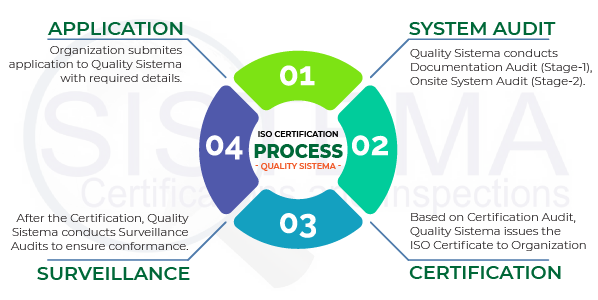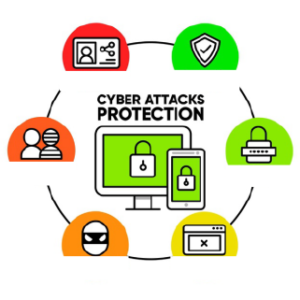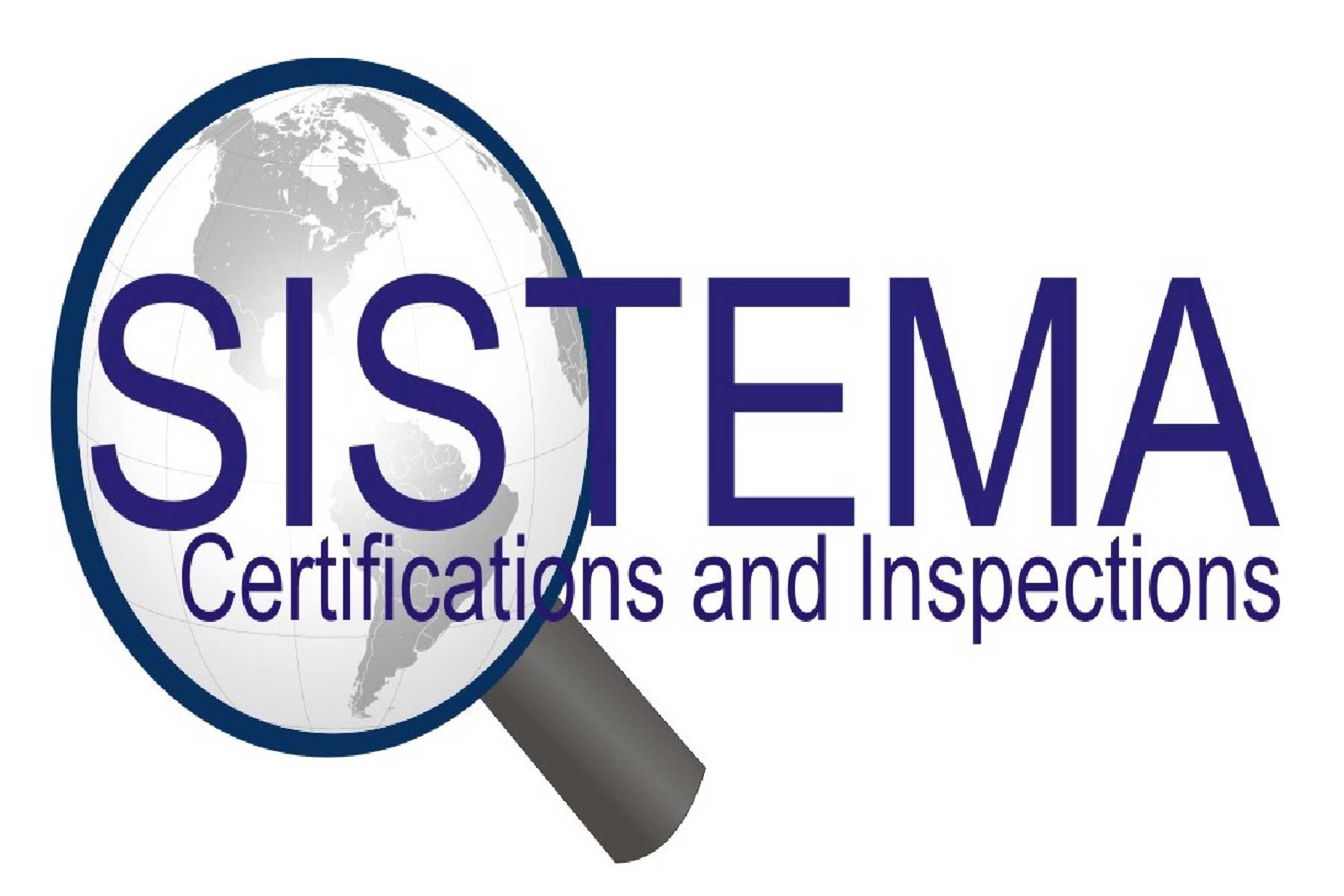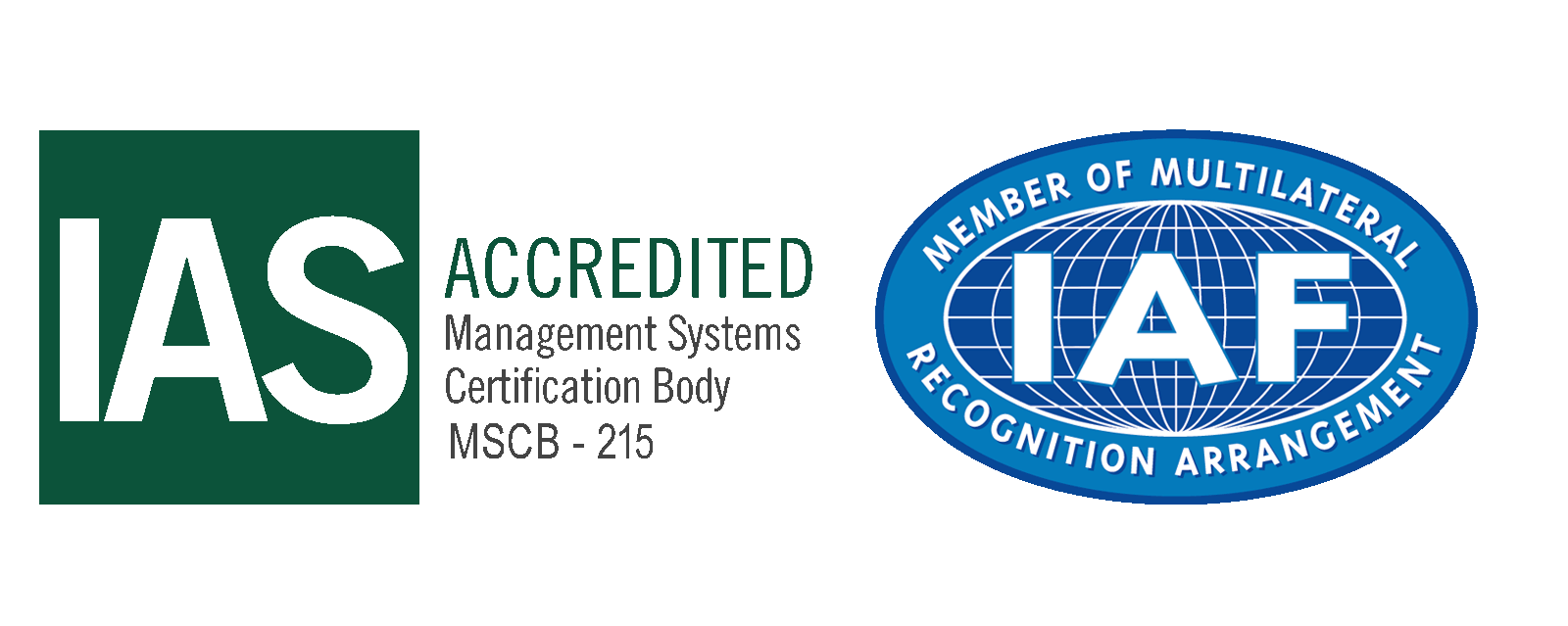Quality Sistema Certifications and Inspections!
ISO 50001 Certification
For Micro, Small, Medium and Large Organizations
Quality Sistema Certifications and Inspections
ISO 50001 Certification
Introduction
About the ISO 50001 Certification : Energy Management System
ISO 50001 certification is grounded in key principles that help organizations improve their energy management systems (EnMS). Central to these principles is the commitment from top management to support energy performance initiatives by setting clear policies and objectives. The Plan-Do-Check-Act (PDCA) cycle ensures continuous improvement through planning, implementation, monitoring, and corrective actions. Effective data management, employee engagement, and regular audits are crucial for accurate energy tracking and identifying efficiency opportunities. Compliance with legal requirements and risk management are also essential, ensuring practices meet regulatory standards. Adhering to these principles leads to significant energy savings, reduced environmental impact, and enhanced operational efficiency.
Is ISO 50001 Certification best for my organization?
Updating……………
Who can go for ISO 50001 certification?
ISO 50001 certification is applicable to any organization, regardless of its size, sector, or geographical location, that aims to improve its energy performance systematically. This includes:
✅Manufacturing Companies: Seeking to reduce energy costs and improve efficiency in production processes.
✅Service Providers: Such as hotels, hospitals, and retail stores, looking to manage energy consumption effectively.
✅Government Agencies: Committed to leading by example in energy management and sustainability.
✅Educational Institutions: Universities and schools aiming to reduce their energy footprint.
✅Non-Profit Organizations: Focused on sustainable practices and reducing operational costs.
✅Utilities and Energy Providers: Aiming to optimize energy production and distribution.
Is ISO 50001 Certification Compulsory in organization?
Updatin g………..
ISO 50001 CERTIFICATION PRINCIPLES:
STEP 1: UNDERSTANDING ISO 50001 CERTIFICATION
Overview: ISO 50001 is an international standard for energy management systems (EnMS), aimed at helping organizations improve energy efficiency.
Purpose: The goal is to enable organizations to establish systems and processes necessary to improve energy performance, including energy efficiency, use, and consumption.
STEP 2: COMMITMENT FROM TOP MANAGEMENT
Leadership Involvement: Makesure that top management is committed to the EnMS. They should provide the necessary resources and support.
Policy Development: Develop an energy policy that outlines the organization’s commitment to energy efficiency.
STEP 3: PLANNING
Energy Review: Conduct a thorough energy review to identify significant energy uses and opportunities for improvement.
Baseline Establishment: Establish an energy baseline to measure future energy performance.
Objectives & Targets: Set energy performance objectives and targets that are measurable and achievable.
STEP 4: IMPLEMENTATION AND OPERATION
Action Plan: Develop an action plan to achieve energy objectives and targets. This includes defining roles, responsibilities, and authorities.
Training & Awareness: Provide training to employees and raise awareness about the EnMS and its benefits.
Communication: Establish internal and external communication channels regarding the energy management system.
STEP 5: PERFORMANCE EVALUATION
Monitoring and Measurement: Regularly monitor and measure energy performance against the established baseline and targets.
Internal Audits: Conduct internal audits to ensure the EnMS is functioning effectively and meeting the ISO 50001 requirements.
Management Review: Top management should review the EnMS periodically to ensure its continuing suitability, adequacy, and effectiveness.
STEP 6: IMPROVEMENT
Corrective Actions: Identify non-conformities and take Corrective actions to prevent their recurrence.
Continual Improvement: Continuously seek opportunities to improve energy performance and the effectiveness of the EnMS.
STEP 7: ISO CERTIFICATION
Pre-Assessment: Conduct a pre-assessment audit to identify any gaps in the EnMS.
Certification Audit: Engage an external certification body to conduct a formal audit. If the system meets all requirements, the organization will be awarded ISO 50001 certification.
Surveillance Audits: Undergo regular surveillance audits by ISO certification body to makesure continued compliance with ISO 50001 certification .
Why ISO 50001 Certification required in the organization ?
ISO 50001 certification is essential for organizations seeking to enhance their energy efficiency, reduce costs, and minimize environmental impact. This certification provides a structured framework for implementing an energy management system (EnMS), ensuring consistent and measurable improvements in energy performance. By achieving ISO 50001 certification, organizations demonstrate their commitment to sustainability, gain a competitive edge, and comply with regulatory requirements, all while fostering a culture of continuous improvement and responsible energy use.
Who can go for ISO 50001 certification?
ISO 50001 certification is applicable to any organization, regardless of its size, sector, or geographical location, that aims to improve its energy performance systematically. This includes:
✔ Manufacturing Companies: Seeking to reduce energy costs and improve efficiency in production processes.
✔ Service Providers: Such as hotels, hospitals, and retail stores, looking to manage energy consumption effectively.
✔ Government Agencies: Committed to leading by example in energy management and sustainability.
✔ Educational Institutions: Universities and schools aiming to reduce their energy footprint.
✔ Non-Profit Organizations: Focused on sustainable practices and reducing operational costs.
✔ Utilities and Energy Providers: Aiming to optimize energy production and distribution.
ISO 50001 Cortication Requirements :
The compulsory requirement for ISO 50001 Certification are listed in its sections from 4 to 10 – this implies every-one of those requirement must be actualized in an organization to implement a standard ISMS.
The description of the sections from 4-through 10 can be summarized as follows:
Section 4: – Context of the organization
Section 5: – Leadership
Section 6: – Planning
Section 7: – Support
Section 8: – Operation
Section 9: – Performance evaluation
Section 10: – Improvement
ISO 50001 Certification
Benefits
here is a step-by-step breakdown of the benefits of ISO 50001 Certification:
1. ENHANCED ENERGY EFFICIENCY
- Energy Management Framework: ISO 50001 provides a structured approach to managing energy, which helps organizations systematically improve energy performance.
- Reduced Energy Consumption: By implementing ISO 50001, companies can identify energy-saving opportunities, leading to significant reductions in energy usage.
- Cost Savings: Reduced energy consumption translates to lower energy bills, contributing to overall cost savings.
2. REGULATORY COMPLIANCE
- Meet Legal Requirements: ISO 50001 helps organizations comply with energy regulations and standards, avoiding potential fines and legal issues.
- Stay Ahead of Regulations: Proactive energy management ensures that companies are prepared for future regulatory changes.
3. ENVIRONMENTAL IMPACT
- Lower Carbon Footprint: Improved energy efficiency reduces greenhouse gas emissions, contributing to environmental sustainability.
- Corporate Social Responsibility (CSR): Demonstrating a commitment to energy management enhances the company’s CSR profile.
4. IMPROVED OPERATIONAL EFFICIENCY
- Optimized Processes: Identifying and implementing energy-saving measures can lead to more efficient operational processes.
- Continuous Improvement: ISO 50001 promotes a culture of continuous improvement, driving ongoing enhancements in energy performance.
5. COMPETITIVE ADVANTAGE
- Market Differentiation: ISO 50001 certification sets companies apart from competitors by showcasing their commitment to energy efficiency.
- Customer Trust: Certification can boost customer confidence and loyalty, as customers increasingly prefer environmentally responsible companies.
6. EMPLOYEE ENGAGEMENT
- Energy Awareness: Implementing ISO 50001 raises awareness about energy efficiency among employees, encouraging responsible energy use.
- Involvement and Motivation: Engaging employees in energy management initiatives can increase motivation and participation.
7. FINANCIAL INCENTIVES
- Access to Funding: Certified organizations may qualify for government incentives, grants, and subsidies related to energy efficiency.
- Investment Attraction: Demonstrating energy management capabilities can attract investors who prioritize sustainability.
8. RISK MANAGEMENT
- Energy Risk Mitigation: By monitoring and controlling energy use, companies can better manage risks associated with energy price volatility and supply disruptions.
- Business Continuity: Enhanced energy efficiency contributes to more reliable operations and business continuity.
9. DATA-DRIVEN DECISION MAKING
- Energy Performance Monitoring: ISO 50001 requires the collection and analysis of energy data, enabling informed decision-making.
- Performance Benchmarking: Organizations can benchmark their energy performance against industry standards and identify areas for improvement.
10. GLOBAL RECOGNITION
- International Standard: ISO 50001 is globally recognized, enhancing the company’s reputation on an international scale.
- Certification Credibility: Being certified by an accredited body adds credibility to the organization’s energy management efforts.
Process of ISO 50001 Certification
Getting ISO 50001 Certified

WHAT TOPICS DO ISO 50001 CERTIFICATION COVER?
- ISO 50001 Certification covers energy management systems.
- It focuses on improving energy performance.
- It includes energy efficiency and conservation.
- It addresses energy use and consumption.
- ISO 50001 involves energy policy and planning.
- ISO 50001 covers energy audits and measurements.
- It includes compliance with legal requirements.
- It emphasizes continual improvement in energy management.
HOW MUCH DOES ISO 50001 CERTIFICATION COST?
Determining the cost of ISO 50001 Certification can vary significantly depending on several factors. Typically, costs involve expenses related to initial assessments, documentation development, training of personnel, and implementation of energy management systems tailored to meet ISO 50001 standards. These initial costs can range from a few thousand to tens of thousands of dollars, depending on the size and complexity of the organization, as well as the scope of the energy management system being implemented.
Moreover, ongoing costs include maintenance and audits to ensure compliance with ISO 50001 requirements and to sustain the effectiveness of the energy management system over time. These costs may also vary widely depending on the organization’s operational scale, industry sector, and geographic location. Organizations often find that the long-term benefits of reduced energy consumption and improved efficiency outweigh the initial and ongoing costs associated with ISO 50001 Certification.
What are the ISO 500001 Certification controls?
Progress……….
Get Free Advice on Audit Process

To Make an appointment, contact us through telephone and email or you can fill the form above.
Our Experts will give you an immediate callback and provide you the necessary information to proceed with ISO 27001 Certification for your Business.
Get in Touch
ISO Standards
Global PREESENCE



